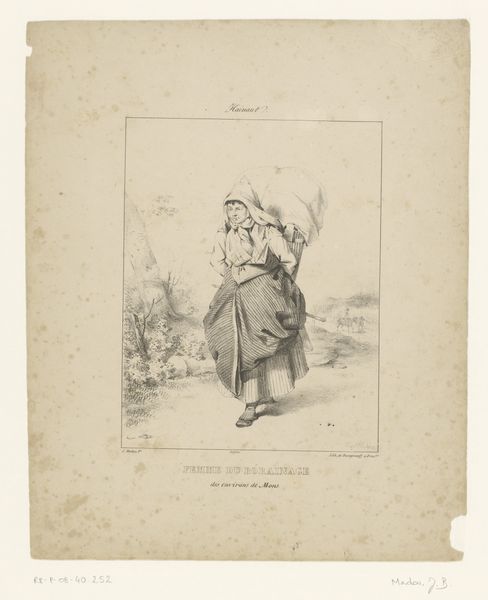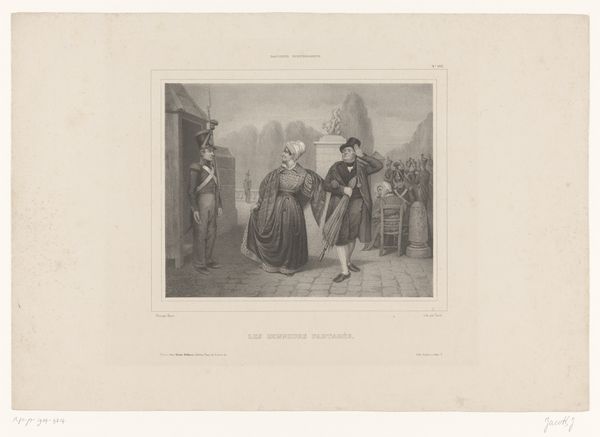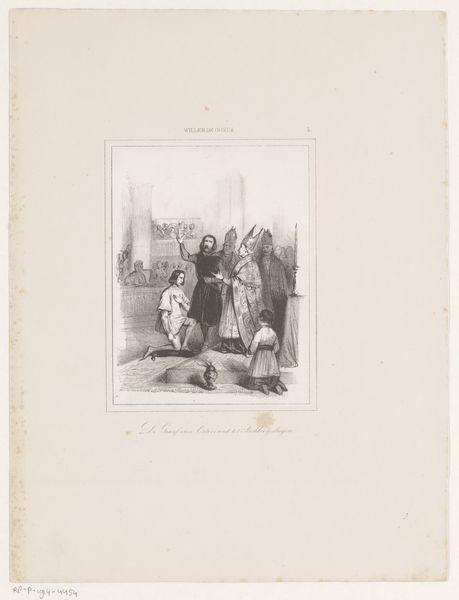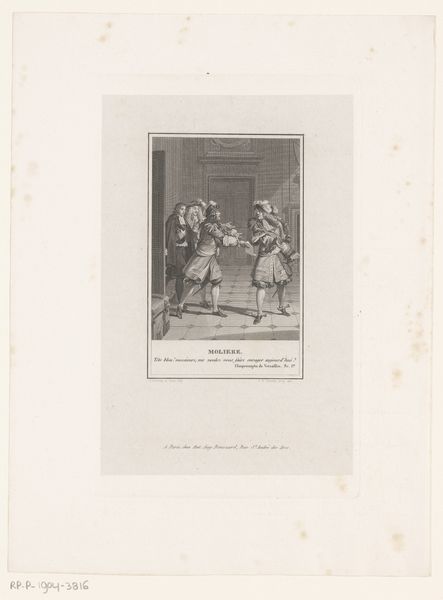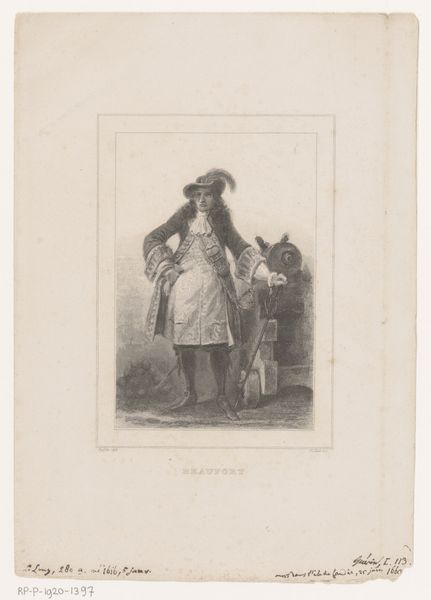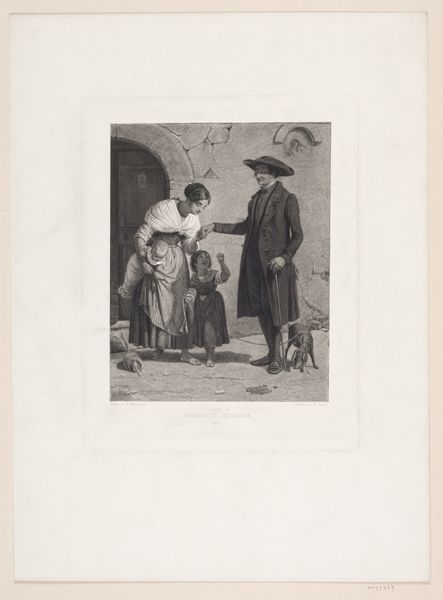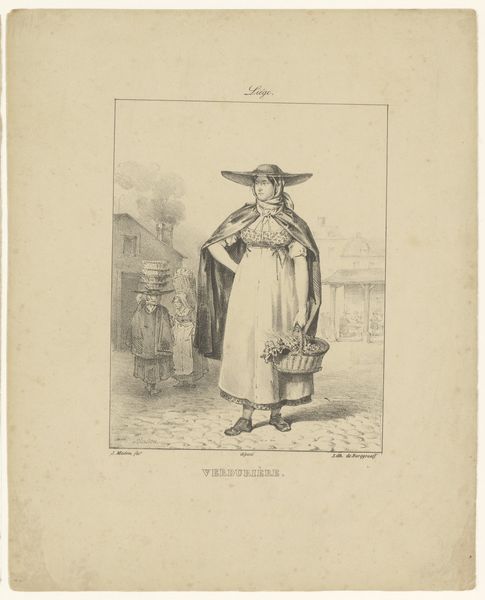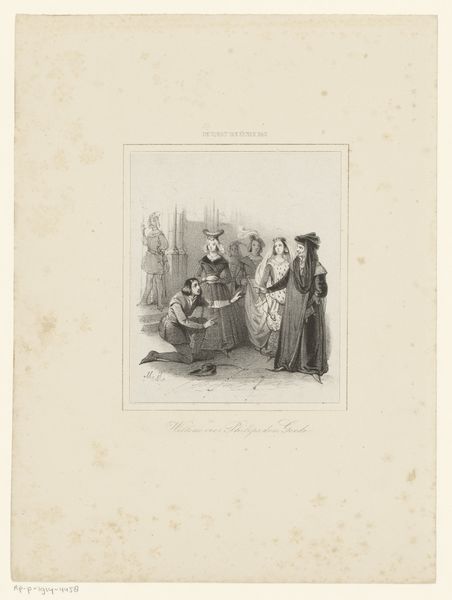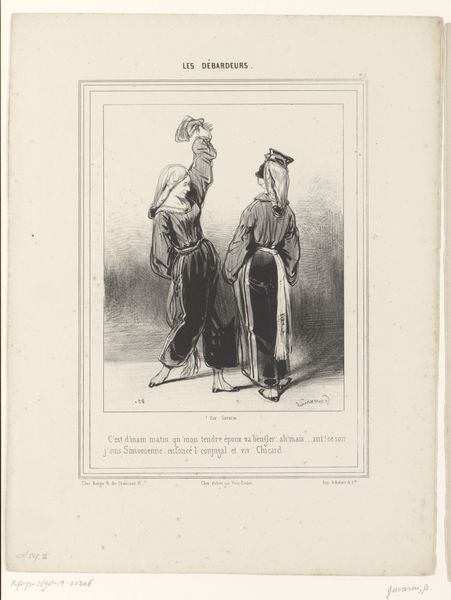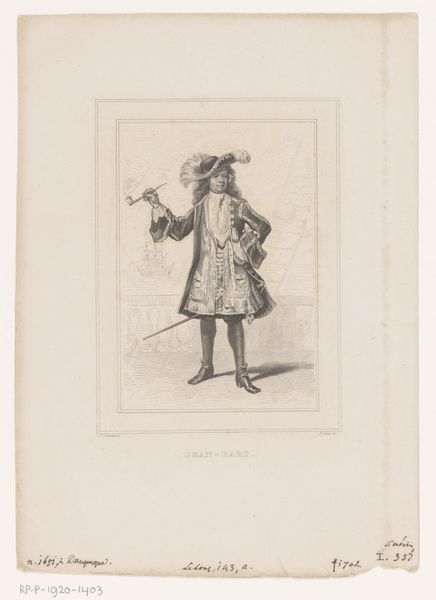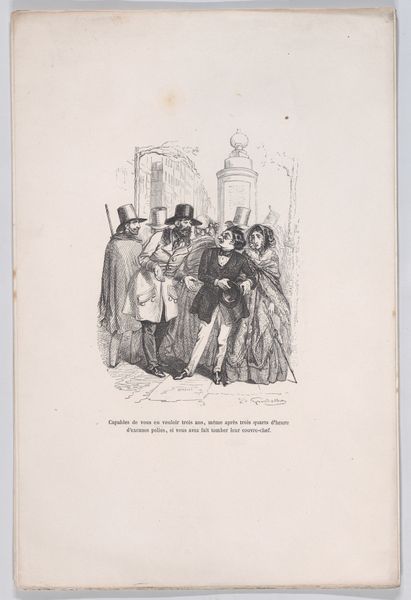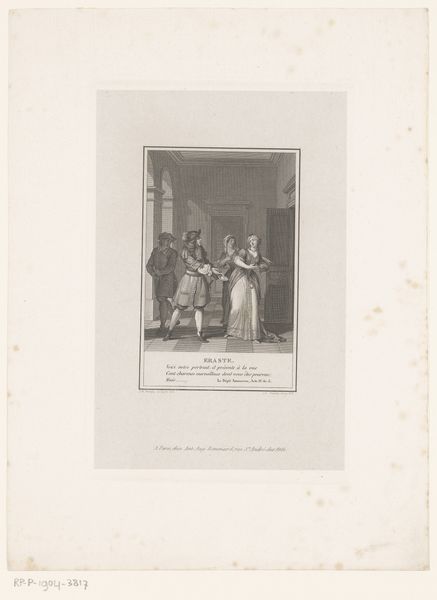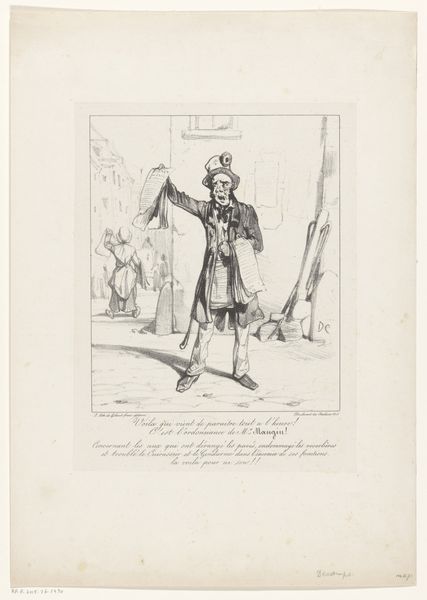
Willem van Nieuwen in de kleren van Filips de Goede 1842
hermanfrederikcareltenkate
Rijksmuseum
print, engraving
narrative-art
old engraving style
figuration
romanticism
history-painting
engraving
Dimensions: height 305 mm, width 225 mm
Copyright: Rijks Museum: Open Domain
Herman Frederik Carel ten Kate made this print, titled "Willem van Nieuwen in de kleren van Filips de Goede," in the Netherlands in the 19th century. The print depicts a man dressed in the attire of Philip the Good, Duke of Burgundy in the 15th century. The image plays with historical representation and the construction of national identity. The work was created during a period of rising nationalism and historical romanticism in Europe. Artists like ten Kate often drew inspiration from the past to evoke a sense of national pride and cultural heritage. In the Netherlands, this involved looking back to the Dutch Golden Age and figures like Philip the Good, who played a significant role in the region’s history. The Rijksmuseum, where this print is housed, was founded in this era to showcase Dutch art and history, further shaping and reinforcing these national narratives. To fully understand this print, we need to look into the historical context, the artist’s background, and the cultural values of the time. Only then can we appreciate the layers of meaning embedded in this image and its role in shaping Dutch national identity.
Comments
No comments
Be the first to comment and join the conversation on the ultimate creative platform.
